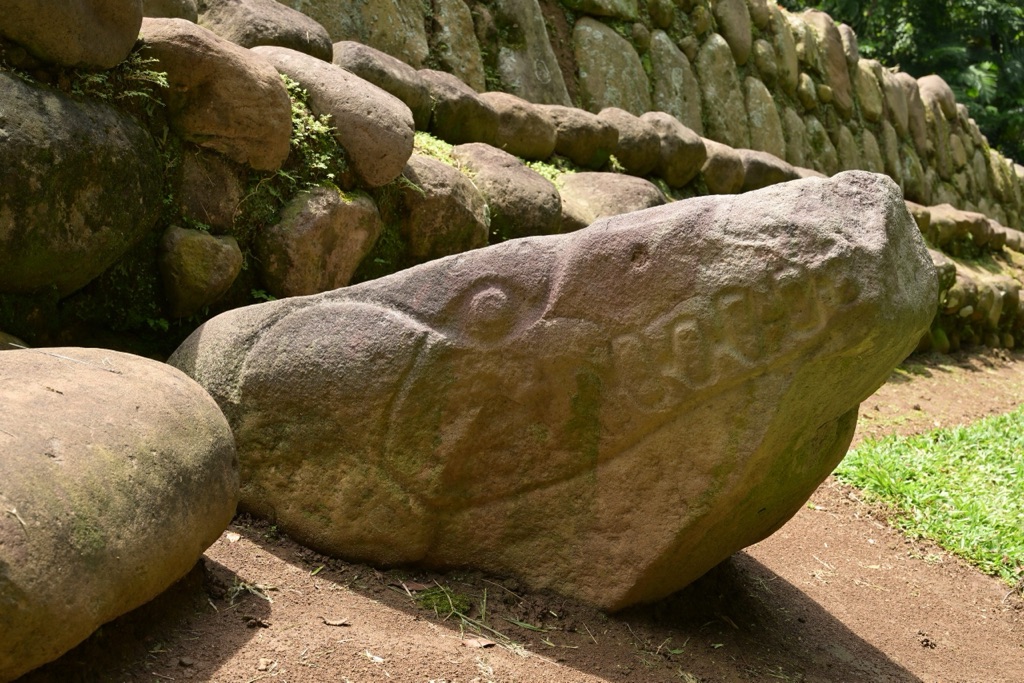Tak’alik Ab’aj, translating to “Standing Stone” in the local K’iche’ Maya language, is a pre-Columbian archaeological site located in Guatemala. Its significance lies in its long history, spanning from the Early Pre-Classic period (1000-800 B.C.) through to the Post Classic period (900-1200 A.D.), and its role in the apparent cultural transition from Olmec to Maya civilizations. This transition is evident in the site’s monuments, architectural styles, and artifacts.
The Olmecs
Who were the Olmecs?
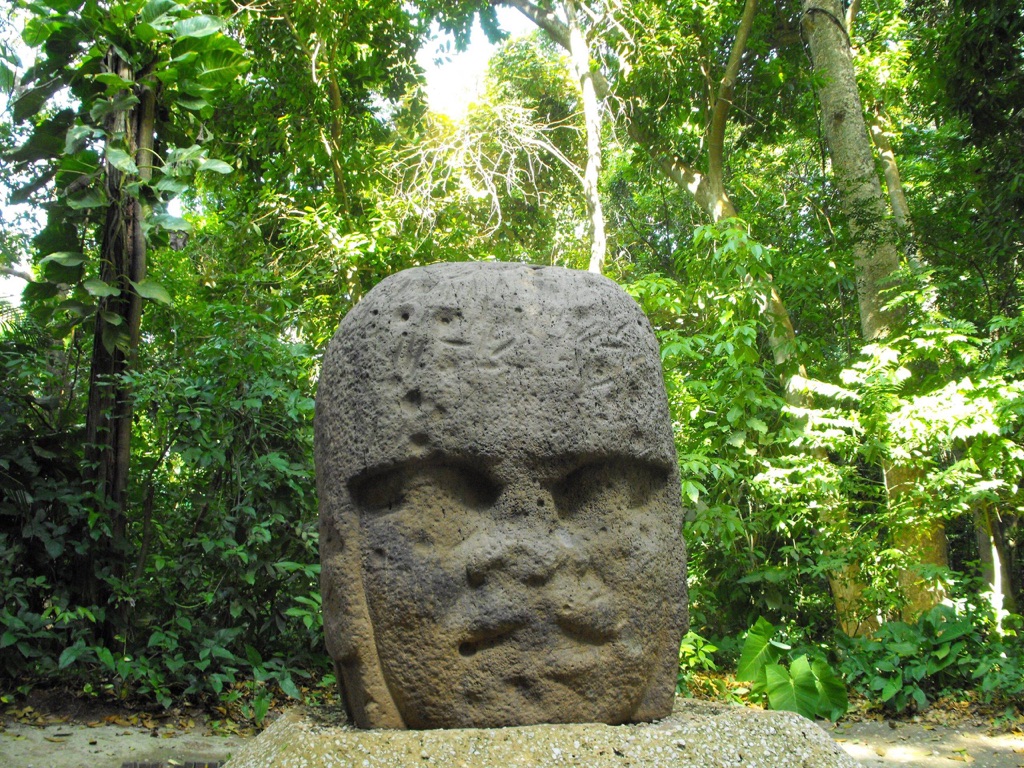
The Olmec civilization, one of the earliest in Mexico, flourished in the tropical lowlands of south-central Mexico, in what are now the states of Veracruz and Tabasco. Renowned for their monumental head statues and sophisticated society, the Olmecs were pioneers in the realms of art and urban planning. Their civilization, which prospered between 1200 and 400 BCE, demonstrated an advanced understanding in various fields. The colossal stone head statues, some weighing as much as 50 tons, are among the most iconic legacies of the Olmecs. However, their artistic endeavors extended beyond these sculptures to include intricate figurines and jade decorations, indicating a culture that placed a high value on artistry. The widespread distribution of these artifacts suggests that the Olmecs engaged in extensive trade networks. Centers like San Lorenzo and La Venta were the heart of Olmec society, serving as both political and religious capitals. These cities exemplified the Olmecs’ ability to integrate urban living with agricultural practices, supporting a growing population through the cultivation of maize, beans, and other crops, alongside hunting, fishing, and foraging. The spiritual life of the Olmecs, deeply intertwined with their art and architecture, often depicted reverence for deities such as the Jaguar, highlighting a culture steeped in religious significance. Despite the absence of written records, archaeological discoveries have provided invaluable insights into their way of life, revealing a civilization whose influence would resonate through subsequent Mesoamerican cultures, including the Maya and Aztec. The Olmecs are perhaps most famous for their colossal head statues, which have intrigued scholars and laypeople alike for generations. These heads, believed to represent rulers or deities, showcase the Olmecs’ remarkable skill in sculpture and their societal emphasis on leadership and the Olmec religion. Beyond their monumental art, the Olmecs are credited with significant advancements in mathematics and the development of a calendar system, further underscoring their influence on later civilizations. Their Olmec artistic and scientific contributions have cemented the Olmecs’ place as a foundational culture in Mesoamerican history.
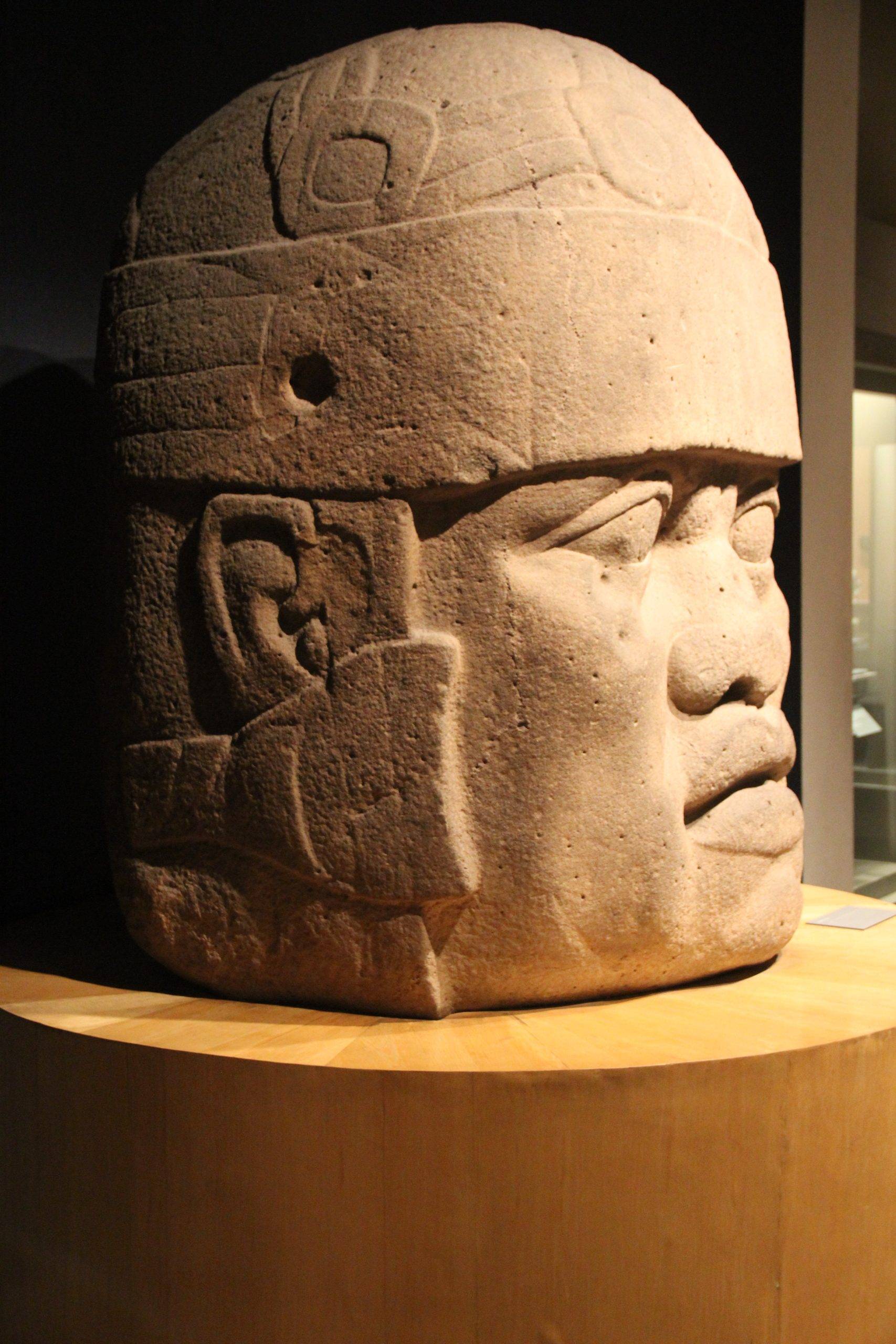
Descriptions of what the Olmecs looked like are primarily based on the depictions found in Olmec art, including the colossal heads. These representations suggest that the Olmecs had distinct facial features, with broad noses and full lips, which some scholars believe may provide insights into their ethnic characteristics. However, without written records or DNA evidence, these interpretations remain speculative. The physical appearance of the Olmecs, as depicted in the Olmec art, continues to be a subject of fascination and study, offering glimpses into the identity of this ancient civilization. Today, the direct descendants of the Olmec people are difficult to identify, as centuries of migration, cultural integration, and the rise and fall of subsequent civilizations have obscured the lines of descent. However, some contemporary indigenous groups in the regions once inhabited by the Olmecs may share genetic and cultural ties to this ancient civilization. The languages spoken by the Olmecs remain a mystery, as they left no decipherable written records. Linguists and archaeologists have speculated that the Olmecs might have spoken a form of Proto-Mixe-Zoquean, a language family still present in the region, suggesting a linguistic legacy that endures among certain indigenous communities. While the Olmec civilization itself has long since vanished, the impact of their culture and innovations continues to be felt. No known pure descendants of the Olmecs exist today, as they were absorbed into the mosaic of Mesoamerican civilizations that followed. However, their artistic, agricultural, and spiritual practices have left an indelible mark on the cultures that succeeded them, ensuring that the legacy of the Olmecs lives on in the rich tapestry of Mesoamerican history. Through ongoing archaeological research and the preservation of the monumental Olmec art and architecture, the story of the Olmecs remains a captivating chapter in the story of human civilisation.
Olmec Archaeological Sites and Artifacts
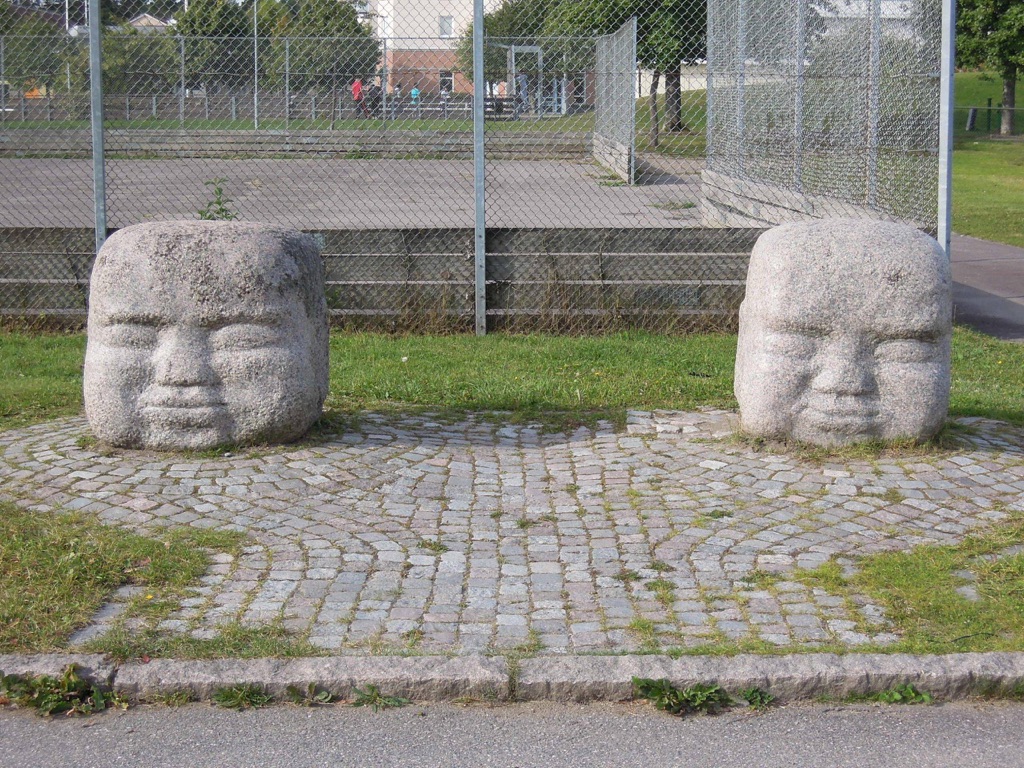
Pre-Olmec Cultures
The Foundations of Mesoamerican Civilisation
Before the rise of the Olmec civilization, the region that would become the heartland of their culture was inhabited by various groups that laid the groundwork for the complex societies to follow. These pre-Olmec cultures, dating back to as early as 2500 BCE, were primarily composed of agricultural communities. They cultivated staple crops such as maize, beans, and squash, which became the dietary foundation for Mesoamerican civilizations. The gradual shift from nomadic to sedentary lifestyles facilitated the development of social structures and religious practices that would influence the Olmec and subsequent Mesoamerican cultures. Archaeological evidence from sites such as San Lorenzo provides insight into these early communities, showcasing early forms of village life and the beginnings of ceremonial architecture. These pre-Olmec groups engaged in trade, which played a crucial role in the dissemination of ideas and technologies across the region. The exchange of jade, obsidian, and other materials indicates a network of interaction that predated and set the stage for the Olmec civilisation. 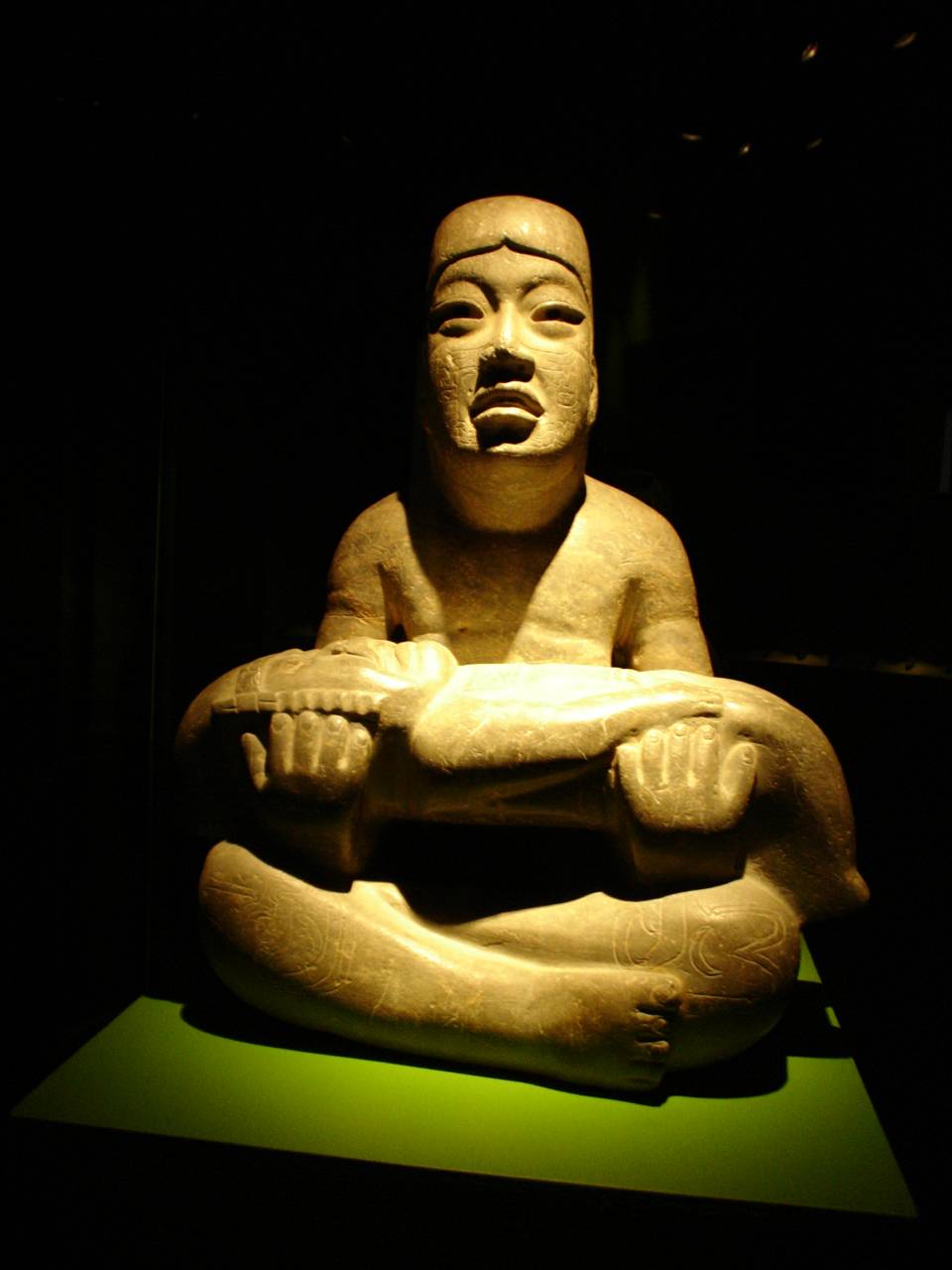
The Role of Environment and Agriculture
The fertile lands along the Gulf Coast of Mexico offered an ideal environment for the development of agriculture, which supported the increase in population and the complexity of pre-Olmec societies. Innovations in agricultural techniques, such as slash-and-burn farming and the construction of raised fields to manage water, contributed to the sustainability of these early communities. This agricultural surplus eventually supported the rise of the Olmec civilisation, which would come to dominate the region.
Chronology of the Olmec Civilization
The Formative Period
The Olmec civilization, often regarded as the “Mother Culture” of Mesoamerica, thrived from approximately 1400 to 400 BCE. This period, also known as the Formative or Preclassic period, saw the emergence and development of the Olmec culture in the tropical lowlands of south-central Mexico, particularly in the present-day states of Veracruz and Tabasco.
Key Phases
The chronology of the Olmec civilization can be divided into early, middle, and late phases, each marked by significant developments in society, art, and architecture. The early phase (1400-1200 BCE) witnessed the establishment of the first major Olmec centers, such as San Lorenzo, which became a pivotal hub for the emerging elite and religious activities. The middle phase (1200-900 BCE) is characterized by the zenith of San Lorenzo and the rise of La Venta, another major ceremonial center. During the late phase (900-400 BCE), the influence of the Olmec waned, and power shifted to other emerging Mesoamerican cultures.
Major Events and Turning Points
The Rise and Fall of San Lorenzo
San Lorenzo, one of the earliest and most significant Olmec centers, experienced a dramatic rise around 1400 BCE. It became a focal point for the Olmec, showcasing monumental stone heads, extensive urban planning, and a complex social hierarchy. However, around 900 BCE, San Lorenzo’s influence declined, possibly due to environmental changes, shifts in trade routes, or internal conflicts. This decline marked a significant turning point, as the center of Olmec activity moved to La Venta. 
The Flourishing of La Venta
Following the decline of San Lorenzo, La Venta emerged as the preeminent Olmec center around 900 BCE. This site is renowned for its colossal stone heads, intricate jade artifacts, and the Great Pyramid, one of the earliest Mesoamerican pyramids. La Venta symbolized the height of Olmec art, Olmec religion, and political power, serving as a key node in the broader Mesoamerican cultural and trade networks.
The Gradual Decline
The decline of the Olmec civilization around 400 BCE was not abrupt but rather a gradual process influenced by various factors, including environmental degradation, resource depletion, and the rise of competing centers of power in Mesoamerica. As Olmec influence waned, their cultural and technological innovations were assimilated and transformed by successor civilizations, ensuring the legacy of the Olmec in the foundational aspects of Mesoamerican culture. The Olmec civilization’s chronology and major events highlight the dynamic nature of Mesoamerican history, showcasing the rise and fall of one of the region’s earliest and most influential cultures. Through their monumental architecture, sophisticated art, and complex societal structures, the Olmecs laid the groundwork for the flourishing of subsequent Mesoamerican civilizations.
Olmec Gods
The Olmec civilization, recognized as the first major civilization in Mesoamerica, has left behind a rich tapestry of religious beliefs and practices that have significantly influenced the spiritual landscape of subsequent Mesoamerican cultures. Despite the absence of direct written records, scholars have managed to piece together the contours of the Olmec pantheon through the meticulous analysis of art, iconography, and comparative mythology. This pantheon, comprising a diverse array of deities and supernaturals, reflects the Olmecs’ deep connection with nature, agriculture, and the cosmos. Each deity, often associated with specific natural phenomena or animals, played a distinct role in the Olmec cosmology, underscoring the civilization’s complex spiritual worldview.
List of Olmec Deities:
1. Olmec Dragon (God I) – Also known as the Earth Monster, this deity is characterized by flame eyebrows, a bulbous nose, and a bifurcated tongue, symbolizing the earth’s power and fertility.
2. Maize Deity (God II) – Represented with corn sprouting from its cleft head, this god underscores the importance of maize and agriculture in Olmec society.
3. Rain Spirit and Were-jaguar (God III) – This complex figure embodies the transformative power of the jaguar and is closely associated with rain and fertility, though scholars debate whether it represents one deity or two intertwined aspects.
4. Banded-eye God (God IV) – Known for the distinctive band running through its eye, this deity’s exact role remains enigmatic but is thought to be another aspect of the Maize God.
5. Feathered Serpent (God V) – A precursor to the Quetzalcoatl of later Mesoamerican religions, the Feathered Serpent symbolizes the union of earth and sky, marking its significance in Olmec mythology.
6. Fish or Shark Monster (God VI) – Often depicted with shark teeth and a crescent-shaped eye, this supernatural being is associated with water and possibly the underworld, reflecting the Olmecs’ reverence for aquatic life.
Dive deeper into the Olmec Gods
The Olmec pantheon, with its rich symbolism and complex deities, offers a window into the spiritual life of this ancient civilization. Through the ongoing efforts of scholars and archaeologists, the understanding of these deities continues to evolve, highlighting the Olmecs’ enduring influence on Mesoamerican culture and religion.
FAQ: Deciphering the Enigma of the Olmec Civilization
What destroyed the Olmecs?
The decline of the Olmec civilization is a subject shrouded in mystery, with no single factor being definitively responsible for its downfall. However, several theories suggest a combination of environmental changes, such as flooding or drought, which could have disrupted their agricultural base and economy. Additionally, internal societal pressures and external conflicts with neighboring groups might have contributed to their decline. The exact cause remains a topic of ongoing research and debate among historians and archaeologists.
What did the Olmecs look like?
The physical appearance of the Olmecs is most commonly inferred from their colossal stone heads and other artistic representations they left behind. These sculptures depict individuals with broad noses, full lips, and oval-shaped eyes, suggesting a distinct physical appearance. It is believed that these features are representative of the Olmec people themselves, indicating a population with a unique set of physical characteristics that distinguished them from neighboring cultures.
What happened to the Olmecs?
After the decline of their civilization around 400 BCE, the Olmecs did not disappear entirely. Instead, their cultural and technological innovations, as well as their religious beliefs and artistic styles, were absorbed and disseminated by subsequent Mesoamerican civilizations, such as the Maya and the Aztec. This cultural legacy allowed the Olmecs (Olmeca) to continue influencing the development of Mesoamerican society long after their political and economic power had waned.
When did the Olmec Civilization begin and end?
The Olmec civilization (Olmecas) is considered to have begun around 1600 BCE, with its cultural and political influence peaking between 1200 BCE and 400 BCE. This period, known as the Formative or Preclassic period in Mesoamerican history, saw the Olmecs establishing significant settlements, most notably at San Lorenzo, La Venta, and Tres Zapotes in what is now Mexico. The civilization’s influence began to decline around 400 BCE, leading to its eventual disappearance as a dominant cultural and political force in the region.
What were the Olmecs known for?
The Olmecs are renowned for several key contributions to Mesoamerican culture and civilization, including: – Monumental architecture and sculpture, most famously the colossal stone heads. – Innovations in agriculture, such as the cultivation of maize and the development of irrigation techniques. – The creation of a complex society with distinct social classes and an influential religious priesthood. – Advances in art and symbolism, including the use of jade, ceramics, and the development of the Olmec hieroglyphic writing system. – Contributions to the Mesoamerican Long Count calendar and the concept of zero, which were critical to the later mathematical and astronomical achievements of the Maya. The Olmecs’ extensive influence on subsequent Mesoamerican civilizations, through their technological, cultural, and religious innovations, cements their legacy as a foundational civilization in the history of the Americas.
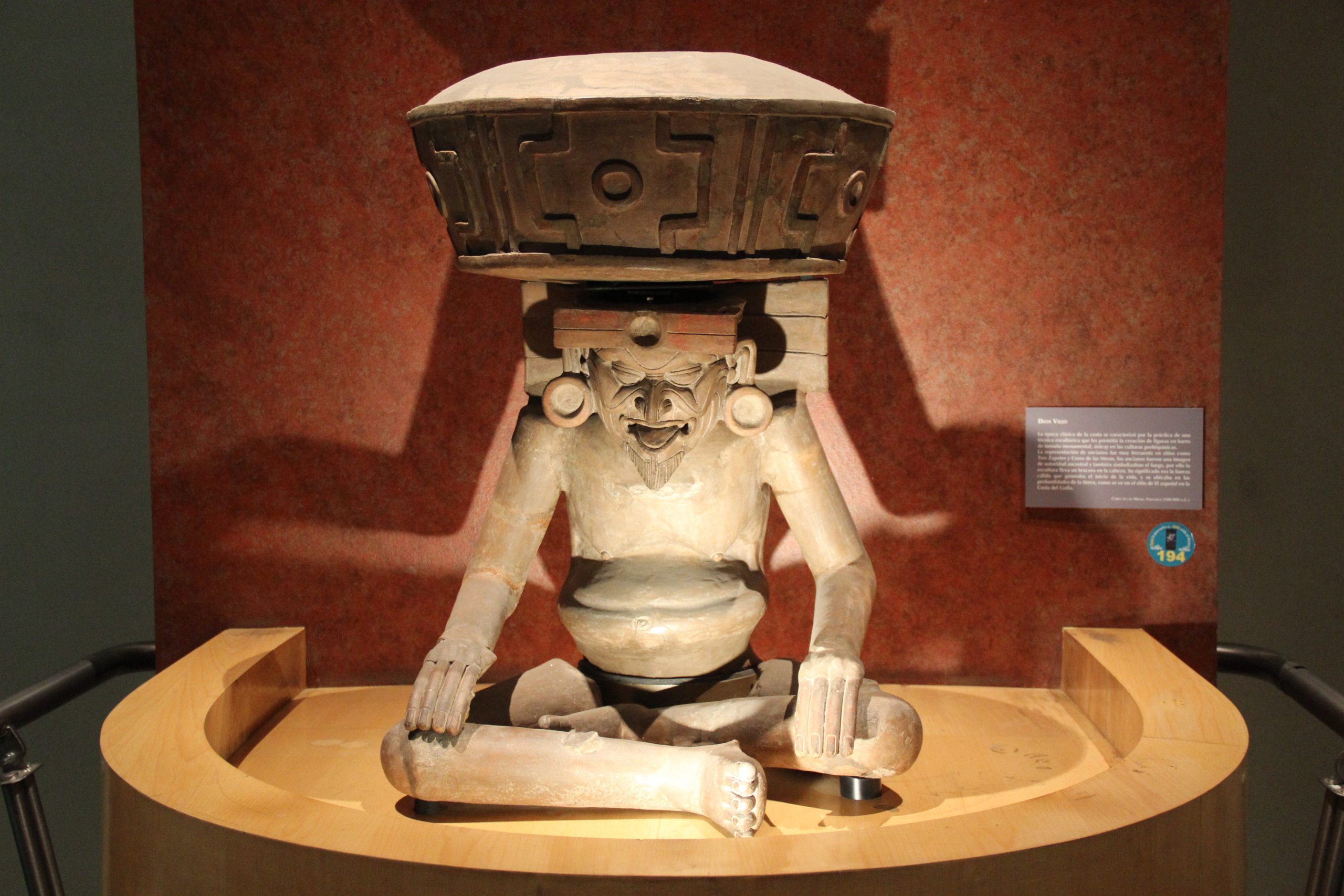
Cerro de las Mesas
Cerro de las Mesas, an archaeological site of significant importance, is situated in the Mexican state of Veracruz, within the Mixtequilla area near the Papaloapan River, approximately 50 kilometers from the city of Veracruz. This site represents a settlement that was continuously occupied from 600 BC to 900 AD, marking it as a pivotal center for both the epi-Olmec culture and the classical culture of Veracruz. Notably, between 300 BC and 600 AD, it served as the capital of one of the regions, highlighting its historical and cultural significance.
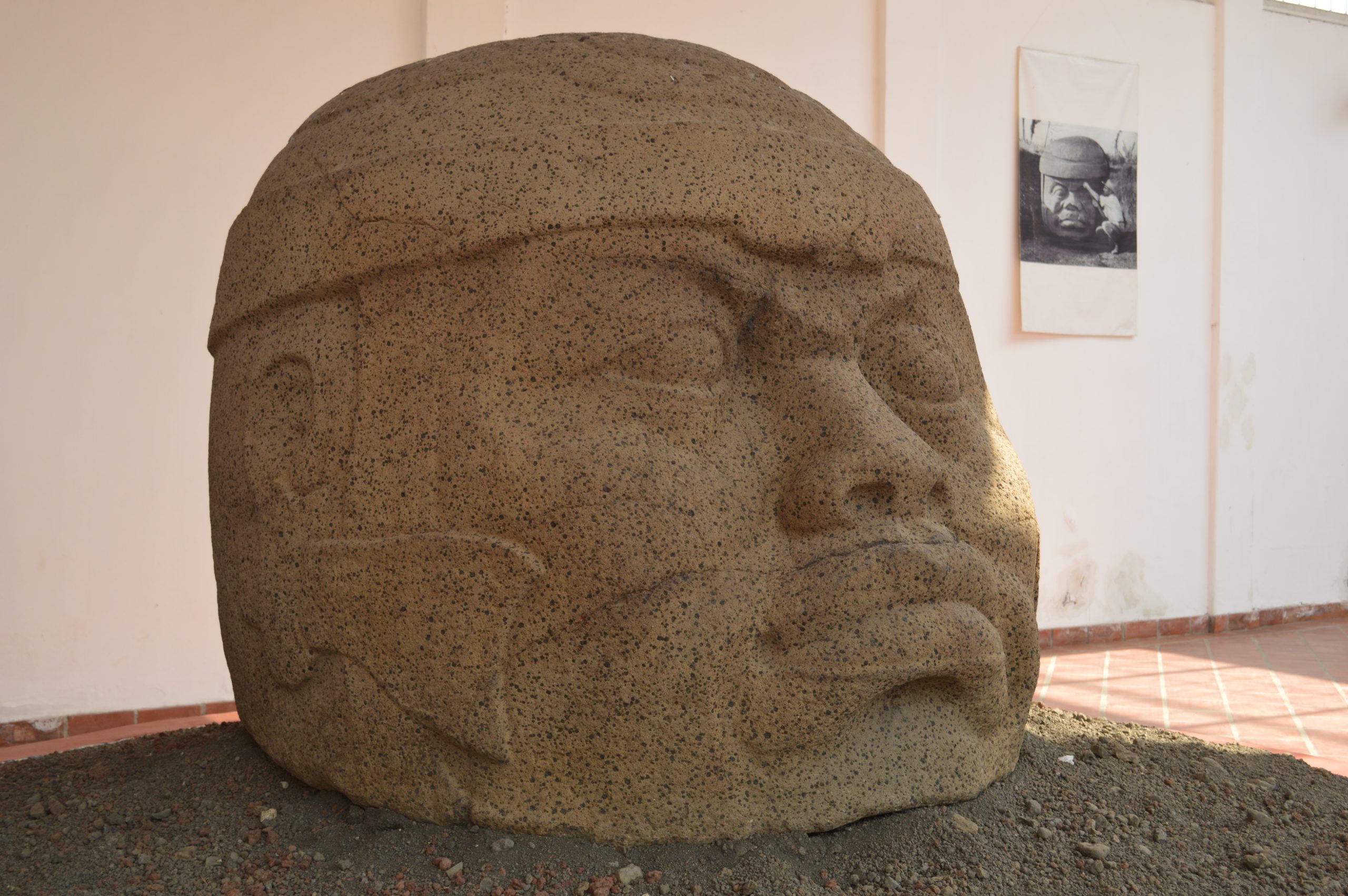
Tres Zapotes
Tres Zapotes stands as a testament to the enduring legacy of Mesoamerican civilizations, marking a significant chapter in the pre-Columbian history of the Gulf Lowlands of Mexico. Located in the Papaloapan River plain, near the contemporary village of Tres Zapotes, this archaeological site offers invaluable insights into the Olmec civilization and its successors, the Epi-Olmec and Classic Veracruz cultures. The site’s strategic position at the western edge of the Los Tuxtlas Mountains facilitated a unique blend of cultural and economic activities, leveraging both the forested uplands and the fertile flatlands.
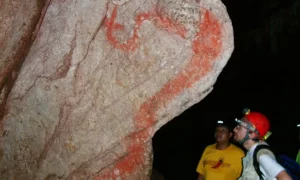
Juxtlahuaca
The Juxtlahuaca cave, located in the Mexican state of Guerrero, stands as a significant archaeological site that offers a rare window into the artistic and cultural practices of ancient Mesoamerica. This cave, along with the nearby Oxtotitlán cave, houses some of the earliest and most sophisticated painted art known in the region, displaying clear links to Olmec motifs and iconography. The presence of these murals in Juxtlahuaca not only highlights the artistic prowess of the people who created them but also raises intriguing questions about the extent of Olmec influence across Mesoamerica.
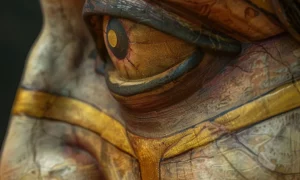
Olmec Gods
The Olmec civilization, flourishing from before 1200 BCE until around 400 BCE along Mexico’s southern Gulf Coast, stands as a monumental beacon in the annals of Mesoamerican history. As the progenitor of later Mesoamerican cultures, the Olmecs have left an indelible mark on the region’s religious and mythological landscape. Despite the absence of direct written accounts of their religious beliefs, scholars have pieced together a complex tapestry of Olmec deities and supernaturals through meticulous archaeological and iconographic analysis. This exploration into the Olmec pantheon not only sheds light on the civilization’s spiritual realm but also underscores the profound influence the Olmecs had on subsequent Mesoamerican religious thought.
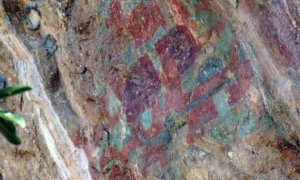
Oxtotitlán
Oxtotitlán, a natural rock shelter located in Chilapa de Álvarez, in the Mexican state of Guerrero, stands as a testament to the complexity and reach of Olmec culture within Mesoamerica. This archaeological site, along with the nearby Juxtlahuaca cave, harbors some of the earliest sophisticated painted art in the region, dating back to approximately 900 years BCE. The presence of Olmec motifs and iconography hundreds of kilometers away from the Olmec heartland raises intriguing questions about the spread of this influential culture.

